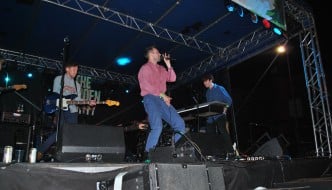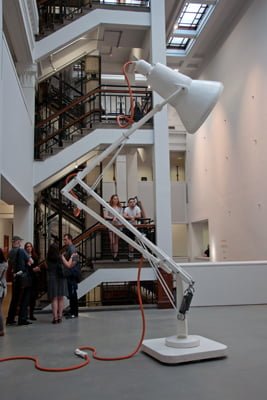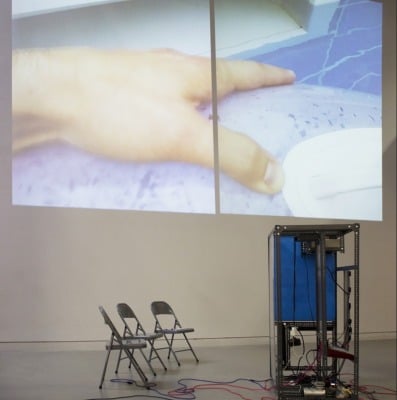Exhibition review: Jonathan Trayte and Stass Paraskos @ The Tetley
August 8, 2016

Once you enter the Tetley’s main exhibition space you are confronted by supersized models of various fruit and veg. Grey and grim concrete juxtaposed with colourful inflatables and painted bronzes. Trayte’s 1:1 casts of super-sized, prize vegetables parody our cultures fetish for food – butternut squash shapes labelled as nudes and ceramic bread stacked as if it were something from a trainee bricklayer’s practical assessment. Racks of seductive multi-coloured concrete loiter about the gallery, beckoning you to come closer with their come-hither stares (Or they would if they had eyes…). Trayte’s work has the feel of a bastardized harvest festival with a departure from worship of Demeter, goddess of the harvest, to a pseudo-worship of the vegetable itself or rather of its new sleek and sexy, doctored form.
The cherry shrimp in the tank were a firm audience favourite with many asking the age old question ‘…but is it art?’. Although this and other installation had ever so unfortunate trailing wires, which one had to hop over to read the small info plaques. The chronic worrier in me couldn’t help panic when I felt the urge to find out the title of these works.

The colours Stass Paraskos uses demand your attention in a veritable visual assault with his reds, greens, oranges and pinks. His earlier, ‘obscene’ paintings suffer more from a lack of clarity and style than their ‘lewd’ reputation. They depict frolicing nudes as well as humans and animals in carnal embrace from (unfortunately) not so exciting angles. Paraskos’ work caused quite the stir in the 60s and was the last artist in England to be prosecuted under the Vagrancy Act of 1838. The papers related to his trial are put on display for all to see with a selection of his more demure work surrounding it. These later works show his progression with more definitive lines, technique and style being present. Again this work uses the same vivid colours with the odd painting feeling ever so slightly slightly more muted than others. He applies these colours almost as in celebration, harkening us back to the time of ‘flower power’ and ‘free love’ that these paintings are the by-product of.
Both exhibitions feature embraces in different ways – Polyculture with it’s embracing of pop culture while introducing political and social issues around the food our society is so obsessed with into the mix. Lovers & Romance shows this in a more literal fashion. Whether the exhibitions were as embraced by visitors is another matter as numerous comments were made about Paraskos’ crude paintings being ‘just not very good’.
These exhibitions do what all exhibitions should do: they provoke. Provoke us to question, think and react to the art as well as to the ways in which our society has functioned and evolved.
Find out more on The Tetley’s website.




Comments